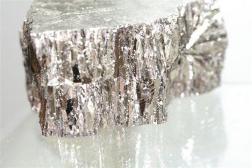Frequently Asked Questions
Chemask® NA Non-Ammoniated Solder Mask
1. What is Chemask® NA? What are its features and benefits?
Chemask® NA Non-Ammoniated Solder Masking Agent is a fast curing, peelable temporary spot mask formulated for safe use on
sensitive metals. It contains high-temperature resistant compounds that protect component-free areas during wave soldering.
Chemask® NA may also be used to protect pins, posts, contacts and edge connections in the solder reflow oven or during
conformal coating processes.
• Stable to 550°F (288°C) – withstands lead-free processing temperatures
• Ideally suited for use with gold, copper, nickel, silver and OSP finishes
• Works with both lead-free and tin/lead applications
• Phthalate-free, low toxicity and environmentally safe
• Compatible with all flux types and cleaning solvents
• Dries tack free in 15 minutes (10 mil thick application)
• Can be introduced into the pre-heat oven without being fully cured
• Removes easily by hand and leaves no residue
• Non-contaminating, non-staining and non-corrosive on all surfaces
• RoHS compliant
2. How does the new Chemask® NA compare to the latex peelable mask Chemask® CM8?
Chemask® NA is also a peelable mask and works as well as Chemask® CM8. The primary differences are that Chemask® NA does
not contain ammonia, and is therefore compatible with lead-free board finishes such as immersion silver, immersion gold, nickel,
lead-free HASL and Entek. Chemask® NA can also be used on standard tin/lead board finishes, including bare copper. Chemask®
NA will also withstand hotter processing temperatures and longer cycling times than any other mask on the market today.
Chemask® NA is not as elastic as Chemask® CM8, which tends not to be a problem with most electronic applications. For other
applications, it can be used successfully on a variety of non-porous surfaces.
3. How do I use Chemask® NA?
When applying the mask by hand using 8 oz. squeeze bottle, insure that all areas of the pre-tinned hole or pad are evenly covered
on the side to be soldered. Automatic dispensing equipment may also be used as appropriate. Chemask® NA can also be applied
using a screen or a stencil. For ease of removal, a minimum thickness of 30 mils is recommended.
Chemask® NA can go straight into the pre-heat oven of a wave soldering machine, or can go into a reflow oven 15 minutes after
application to the PCB. This mask may remain on assemblies for extended periods of time prior to or after processing.
After processing the board, Chemask® NA can be easily peeled off the board by hand or using tweezers.
4. What if I want to apply an extra thick layer of Chemask® NA to the board?
When Chemask® NA is applied in a thick application (> 1/8″), allow extra drying time or oven dry at 250ºF for 30 minutes.
5. If I put Chemask® NA into the pre-heat oven after a short 15 minute cure time, won’t
bubbles form in the mask?
No. Chemask® NA will withstand preheat temperatures without degradation or distortion of the film and will be completely cured by
the end of the processing cycle.
6. Is Chemask® NA completely non-flammable?
Yes. Chemask® NA is non-flammable and contains no flammable components.
7. Is Chemask® NA safe to use?
Yes. Chemask® NA has no strong odors, is non-toxic and, unlike competitors’ products, does not contain phthalates.
8. Is Chemask® NA RoHS compliant?
Yes. RoHS certificates are available on the Chemtronics website www.Chemtronics.com.
9. Is Chemask® NA environmentally friendly?
Yes. Chemask® NA contains no VOC’s or other harmful volatile components. After it has been cured, Chemask® NA can generally
be disposed of without any worries about hazardous waste generation.
10. How can I tell if the product I am using is Chemask® or Chemask® NA?
Chemask® NA is tinted green while the other peelable Chemask® products (Chemask®, Chemask® HV and Chemask® Lead-Free)
are pink.
11. What is the shelf life of Chemask® NA?
The shelf life is three (3) years from the manufacturing date stamped on the container.
12. What type of companies would be interested in these products?
The primary customers that use temporary solder masks are electronics manufacturers, including OEM and contract
manufacturing companies.
13. How is the product packaged?
Chemask® NA is available in two sizes:
• CNA8 8 oz. squeeze bottle packaged in 24 per case
• CNA1 1 gallon
Source: ITW Chemtronics








